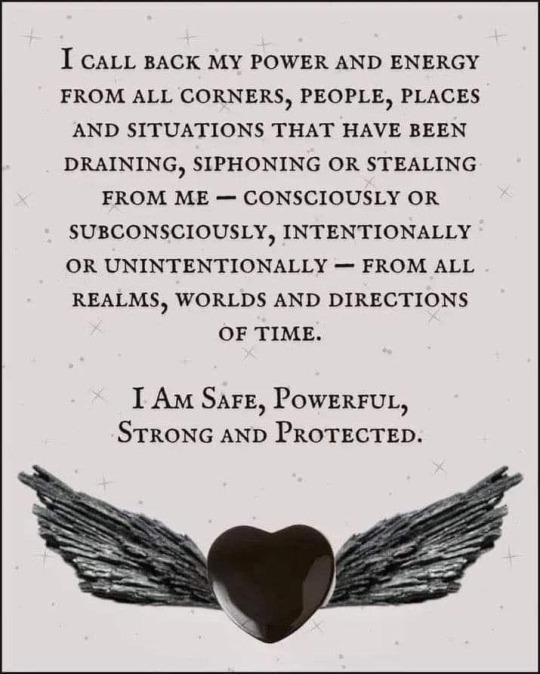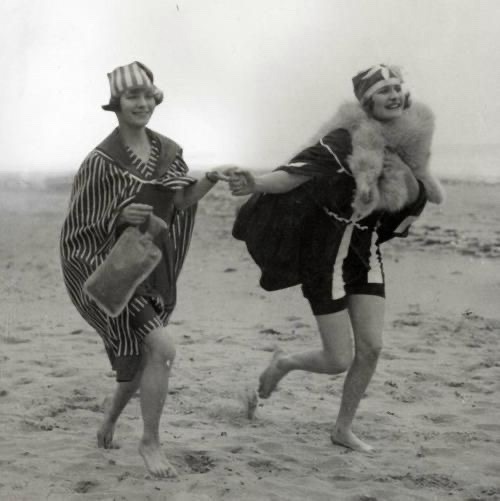Text
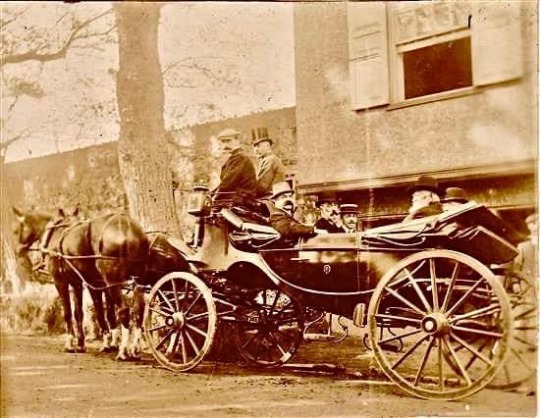
Victor Hugo with party along side the Sausmarez Manor Gate House, Guernsey, Channel Islands.
2 notes
·
View notes
Text

“A breeze is stirring.
Feel the sun on your wings...”
Message from the Council of 13 Indigenous Grandmothers:
“As you move through these changing times... be easy on yourself and be easy on one another. You are at the beginning of something new. You are learning a new way of being. You will find that you are working less in the yang modes that you are used to.
You will stop working so hard at getting from point A to point B the way you have in the past, but instead, will spend more time experiencing yourself in the whole, and your place in it.
Instead of traveling to a goal out there, you will voyage deeper into yourself. Your mother's grandmother knew how to do this. Your ancestors from long ago knew how to do this. They knew the power of the feminine principle... and because you carry their DNA in your body, this wisdom and this way of being is within you.
Call on it. Call it up. Invite your ancestors in. As the yang based habits and the decaying institutions on our planet begin to crumble, look up. A breeze is stirring. Feel the sun on your wings.”
5 notes
·
View notes
Text
A British blacksmith removing the leg irons off a slave, 1907.
This photograph shows a sailor removing the manacle from a newly freed slave. The picture is part of a small collection donated by Samuel Chidwick to the Royal Naval Museum in Portsmouth. His father Able Seaman Joseph Chidwick, born in 1881, was serving aboard HMS Sphinx.
The Africans featured in the photos escaped in a canoe from a slave-trading village on the coast on hearing that the Royal Navy ship was in the area.
In his report dated 15th October 1907, Commander Litchfield wrote that the ship received ‘six fugitives’ on a cruise off the Batineh Coast, Oman between 10th and 14th October. One of the fugitives had been manacled for three years and had escaped with his leg irons still on.
Samuel Chidwick said: “The pictures were taken by my father who was serving aboard HMS Sphinx while on armed patrol off the Zanzibar and Mozambique coast in about 1907. They caught quite a few slavers and those particular slaves that are in the pictures happened while he was on watch. That night a dhow (sailing vessel) sailed by and the slaves were all chained together.
He raised the alarm and they got them onto the ship and got the chains knocked off them. They then questioned them and sent a party of marines ashore to try to track the slave traders down.
They caught two of them and I believe they were of Arabic origin. My father thought the slave trade was a despicable thing that was going on, the slaves were treated very badly so when they got the slavers they didn’t give them a very nice time”.
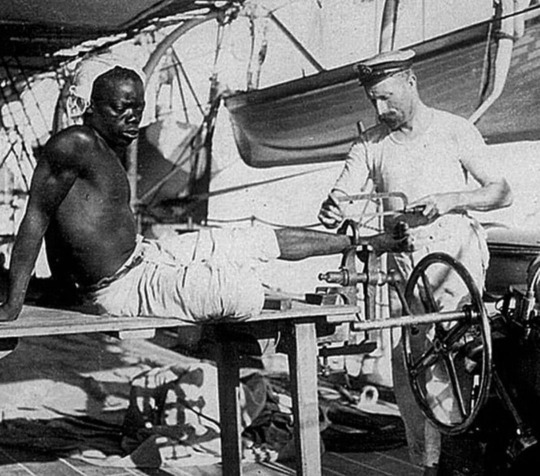
5 notes
·
View notes
Text
“On February 22, 1876, Thaté Iyóhiwiŋ, a Yankton Dakota woman living on the Yankton Indiana Reservation in South Dakota, and her European American mate, Felker Simmons, brought their daughter, Zitkála-Šá, into the world. Simmons would abandon mother and child, yet Zitkála-Šá describes the first 8 years of her life on the reservation as happy and safe. All that changed in 1884 when missionaries came to “save” the children.
Even though White's Indiana Manual Labor Institute was a Quaker project, it still forced the children who attended to adapt to the Quaker way of doing things, including taking new names. Zitkála-Šá was renamed Gertrude Simmons. In her biographies, Zitkála-Šá describes deep conflict between her native identity and the dominant white culture, the sorrow of being separated from her mother, and her joy in learning to read, write, and play the violin.
Zitkála-Šá returned to the reservation in 1887, but after 3 years she decided she wanted to further her education and returned to the Institute again. She taught music while attending school from 1891 to 1895, when she earned her first diploma. Her speech at graduation tackled the issue of women’s inequality and was praised in local newspapers. She had a gift of public speaking and music, and put both to good use during her life.
In 1895 Zitkála-Šá earned a scholarship to attend Earlham College in Richmond, Indiana. While in college she gave public speeches and even translated Native American legends into Latin and English for children. In 1887, mere weeks from graduation, her health took a turn for the worse; her scholarship did not cover all expenses, so she had to drop out.
After college Zitkála-Šá used her musical talents to make a living. From 1897-1899, she played violin with the New England Conservatory of Music in Boston. She then took a job teaching music at the Carlisle Indian Industrial School in Pennsylvania, where she also hosted debates on the issue of Native American treatment. The school used her to recruit students and impress the world, but her speaking out against their rigid indoctrination of native children into white culture resulted in her dismissal in 1901.
Concerned about her mother’s health, Zitkála-Šá returned to the reservation. While there she began to collect the stories of her people and translate them into English. She found a publisher in Ginn and Company, and they put out her collection of these stories as Old Indian Legends in 1901. Like most authors, she took another job at the Bureau of Indian Affairs as her principal support. It was at this job in 1902 that she met and married Captain Raymond Bonnin, a mixed-race Nakota man.
The couple moved to work on the Uintah-Ouray Reservation in Utah for the next 14 years. They had one son, named Ohiya. Zitkála-Šá met and began to collaborate with William F. Hanson, a composer at Brigham Young University. Together they created The Sun Dance, the first opera co-written by a Native American. The opera used the backdrop of the Ute Sun Dance to explore Ute and Yankton Dakota cultures. It premiered in 1913 and was originally performed by Ute actors and singers. Choosing such a topic for the opera would have been a way to strike back at forced enculturation, because the ritual itself had been outlawed by the Federal Government in 1883 and remained so until 1933. Much later, in 1938, The Sun Dance came to The Broadway Theatre in New York City.
From 1902-1916, Zitkála-Šá published several articles about her life and native legends for English readers. Her works appeared in Atlantic Monthly and Harper’s Monthly, magazines with primarily a white readership. Her essays also appeared in American Indian Magazine. While these pieces were often autobiographical, they were still political and social commentary that showed her increased frustration with the Bureau of Indian Affairs, which fired the couple in 1916.
In 1916, the couple moved to Washington D.C., where Zitkála-Šá served as the secretary of the Society of the American Indian. In 1926, she founded the National Council of American Indians, an organization that worked to improve the treatment and lives of Native Americans. By 1928, she was an advisor to the Meriam Commission, which would lead to several improvements in how the Federal Government treated native peoples.
Zitkála-Šá continued writing, and her books and essays became more political in such works as American Indian Stories (1921) and “Oklahoma’s Poor Rich Indians,” published in 1923 by the Indian Rights Association. She spoke out for Indian’s rights and women’s rights up until her death in 1938 at the age of 61"
📷: Gertrude Kasebier's photos of Zitkala-Ša, AKA Red Bird, from BUFFALO BILL'S WILD WEST WARRIORS. You can read about her in the book INDIGENOUS INTELLECTUALS by Kiara M. Vigil.

1 note
·
View note
Text
0 notes
Text

Replica 1500 year-old thatched hut. In 1993, an intriguing discovery surfaced at the northwestern tip of Great Bernera island, located in Scotland's Western Isles. Great Bernera, a small island connected to the Isle of Lewis by a road bridge, harbors the settlement of Bostadh, nestled at its northern edge. The area boasts a quaint beach, a picturesque semi-circle of pristine white sand surrounded by rugged rocks.
During a storm, a section of the dunes bordering the coast was exposed, revealing the presence of stone structures concealed beneath the sand. In response to this exciting revelation, archaeologists conducted a thorough excavation of the site in 1996. Just below the surface, they unveiled remnants of a Norse settlement, but even more thrilling were the hidden treasures lying deeper beneath the Norse buildings.
Atop the Norse buildings, an astonishing revelation emerged – eight Pictish or Iron Age houses lay hidden beneath. These houses boasted a distinct figure-of-eight shape, comprising a sizable circular structure connected to a smaller circular extension through an internal doorway. Often referred to as 'jelly-bean' houses due to their unique form, the larger section served as the primary living space, while the smaller end likely served as storage.
Fascinatingly, each hut interconnected with its neighboring structures through tunnels. The discovery at Bostadh bore striking similarities to the renowned stone village of Skara Brae on Orkney, albeit the former dated back to a more recent period, approximately 500-700 AD, with evidence suggesting it was likely closer to the latter end of that timeframe.
What set the Bostadh village apart as truly remarkable was the immaculate preservation of its contents within the sand, extending up to the top of the walls.
The sand acted as a guardian, safeguarding the ancient relics and insights into the lives of its past inhabitants, offering a remarkable window into history.
Image Credit: Rob Farrow.
3 notes
·
View notes
Text

Suppressed Histories Archives
dtSsnopeor1h5m12ai809mcu3ag3mthf140fh212ta87ta011g9gc6c41837 ·
The Distaff and Female Power, new open access video on Max Dashu youtube channel.
Spinner's wand of Neith, the Moirai, and other ancient goddesses. The Three Wyrd Sisters, Fates, fatas and fées. Ix Chel and Tlazolteotl. Spinners of the Coast Salish.
Ceremonial distaff-shaped wands of Norse seeresses
Mythic spinners in folk imagination: Berthe Pédaque, the spinner and storyteller, the "swan-footed queen," who was legendarily ancient: "in the time when Berthe span"...
Lughia Rajosa of Sardinia and her enchanted distaff
Habetrot, the old spinner fairy, or the three fairy godmothers, who help a girl to a good fate
Folk saints with magical distaffs
The Distaff and the Witch: spinners riding animals throught the skies; the Baba Yaga
Theme of the Emasculating Distaff, a female weapon against men, fantasies of reversed domination
Women who joust with the distaff against knights or monks; or animals who joust
Distaff in the Battle over the Breeches: women take over the male garment as symbol of domination, the “world upside down”
The Charivari and Skimmington: public humiliation of “henpecked” husbands forced to hold a distaff, riding backwards on a mule; the ridicule of non-dominant men (and assertive women).
Fates who come to spin and endow good marriages; courtship at spinning parties.
Spinners around the world, with and without distaff. Spinning while walking!
Modern images of Norns as spinners.
https://youtu.be/UIRi_uGY_1A?si=2TjIXbYZcBaPJU75
#Suppressed History Archives#The Distaff#Female Power#Max Dashu#myth#folkways#The Fates#The Norns#Soinners#Herstory#Goddess#ancient ways#sacred ways
1 note
·
View note
Text

Lithuania : Birute Hill near Palanga, Lithuania, was once home to paleo astronomical observatories. Restored in 1998, the Samogitian Sanctuary is a recreation of a Pagan observatory from the Middle Ages. This northern Lithuanian group of statues is based on artifacts found at the site of a prehistoric astronomical observatory and shrine that stood til the 16th century.
During the key calendar holidays, Lithuanian people would carve wooden poles that correlate to the Balts' gods and goddesses. These Gods and Goddesses are Perkūnas, Aušrinė, Žemyna, Austėja, Ondenis, Patrimpas, Patulas, Velnias, Leda, Saulė and Mėnulis.
#Lithuania#ancestors alive!#what is remembered lives#memory & spirit of place#ancient ways#sacred ways#folkways#traditions#paleo astronomical observatories#Samogitian Sanctuary#Gods#Goddesses
6 notes
·
View notes
Text

'Kolomyjka' by Teodor Axentowicz, 1895, photo: MNW
1 note
·
View note
Text
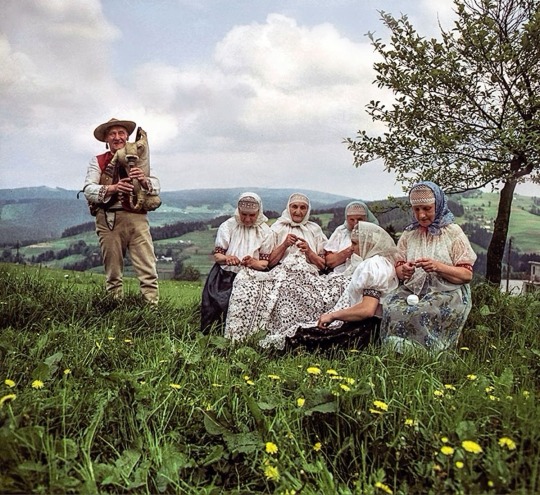
The lacemakers of Koniaków, a circle of village matrons at work in the mountains, with a view of the Beskid range in the background, and a mountaineer from the Beskid Żywiecki region playing the bagpipes, 1977.
Photo.: Woody Ochnio/Forum
Koniaków, a village in the Beskid mountain range in the South-West of Poland is the home of a regional speciality nowadays famous the world over. The items of crocheted lace incite the awe of ethnographers, who call them a "world represented through talented hands”. The skilled crochet hook operators apply their imagination and sense of beauty and choose from a series of some 2200 patterns to convey the world that surrounds them. Gąsiorki (duckies), strupki (crusties), skrzydełka (little wings), kaczeńce (buttercups), and niezapominajki (forget-me-nots) - these are all names of the various stiches that build up whole works of art, both big and small. There are delicate and ornate napkins, crocheted coifs, white and creamy little round roses, liturgical lace, and caps. There are also items dictated by fashion and the market’s needs - collars, gloves, cupboard covers, wedding gowns, as well as earrings, cuff links, lampshades and screens.
The Koniaków village is situated right by the meeting point of Poland’s borders with the Czech Republic and Slovakia. The local artists, all of whom are women, reiterate that without crocheting, there would be no life. Their workshop is contained within a kiśnicka, a little wooden box which keeps the essential items passed on through generations of lace makers. Inside, there is a crochet hook, as well as thread, ready decorative motifs, and the one thing that is most important to the crocheters - eye glasses. All the remaining gear - that is, thousands of crochet patterns, traditional motifs and compositions are all contained in the artisan’s minds and imaginations.
The folk artists are constantly searching for ways in which to adapt traditional ornamentation to fashionable, contemporary forms. This search once resulted in the creation of crocheted lace g-strings, an item which proved controversial as it divided the community. In a talk with Culture.pl, Barbara Juroszek, from the Regional Cultural Centre, commented.
Some said that it’s a disgrace that the same lace that decorated altars and stoles would now decorate… well, something else. Others set themselves to work, creating a collection of women’s and men’s underwear, and the whole scandal basically won this local speciality some major publicity.
Another famous moment came with a 5-metre spread, which made it to the Guinness Book of Records. It took more than 5 months to make, weighed 5kg and used up 50 kilometres of thread. The thousands of elements which were joined together were later presented at the International Crochet Festival in Lepoglava, Croatia. Today's lace experts also shows no hesitation when pointing to the most talented and innovative crochet maker of modern times. It’s Beata Legierska, who has raised heklowanie to the height of high art, and has no equals when it comes to the meticulous precision of her work. She has been creating crochet laces from the age of 6, and has two generations of lacemakers behind her. Beata Legierska has also presented her work at a great many exhibitions in the Czech Republic, Germany, France, Romania and Switzerland.
Source: The World in Talented Hands: Koniaków Crocheted Lace on CULTURE.PL
#Koniaków#Poland#ancestors alive!#what is remembered lives#memory & spirit of place#ancient ways#folkways#love#life#traditions#past times#Beskid Żywiecki#Woody Ochnio/Forum#Photograph#1977#lace#crochet#lace makers#folk artists#The World in Talented Hands: Koniaków Crocheted Lace#CULTURE.PL
1 note
·
View note

